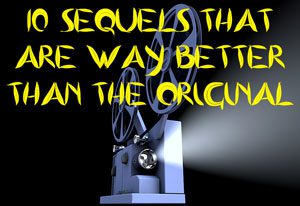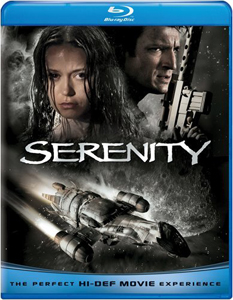Like a lot of “Firefly” fans, I have mixed feelings about “Serenity,” the 2005 movie that continued the saga. It’s a solid movie by every important metric (the 7.9 IMDB rating, compared to 9.2 for “Firefly,” seems about right). But by 2005, we had finally gotten to appreciate the 14 episodes in chronological order on DVD, and along came this film where — as with the original haphazard airing of the series — we felt like we were missing something.
Unanswered questions
What about Blue Sun? What about Book’s past? How’d they get the new mule? Why does the Serenity seem more blue than it did on the TV show, where it seems more brown? Why did they redesign the bridge to have two consoles? Who the heck is this Mr. Universe guy who’s suddenly their best bud?
Some of these questions would later be addressed in the comic books and short stories (which I’ll tackle in my next “Firefly” post), but other questions remain unanswered to this day. (You know what really gets my goat? Tim Minear’s assertion on a “Firefly” DVD commentary that they had something special planned for Inara; but he doesn’t share what it is on the off chance they get to tell the story someday.)

“Serenity” (2005)
Director: Joss Whedon
Writer: Joss Whedon
Stars: Nathan Fillion, Gina Torres, Alan Tudyk
None of this is writer-director Joss Whedon’s fault, of course. He knew he was only guaranteed one movie, so rather than doing a small story — say, the equivalent of episodes 15 and 16 of “Firefly” — he jumped the narrative ahead to make a big damn movie where Mal is a big damn hero fighting a big damn bad guy in the final act. In some ways, “Serenity” seems like it would’ve been the Season 1 finale, in some ways, the Season 2 finale. We’ll never know; even Whedon probably doesn’t know.
Worthy characterization
Still, inasmuch as “Serenity” had to be in movie form, it’s a good one. Six characters get worthy characterization (although Jayne seems a bit too nice, even performing crash webbing checks on his crewmates), and Book — although his past remains mysterious — at least gets a good death scene. Mal is a worthy action hero; although I’m not thrilled with how extended the blockbustery action and violence are in the final act, both Nathan Fillion and his principled character are worthy of the bigness.
Jayne — and even Mal himself, to some degree — questions why Mal doesn’t dump River at the nearest port. But I think we all knew Mal — bluster aside — saw River and Simon as members of his crew — and he doesn’t abandon members of his crew.
Despite the oft-cited similarities, Mal is not Han Solo, who truly did avoid galactic conflicts for a long time. Mal and Zoe actually fought in a war for their independence because they believed strongly in the cause; Han required significant arm-twisting to do the same. River is the ultimate symbol of the Alliance meddling in one’s life, so it fits that Mal would eventually see her as both someone — and something (the knowledge locked in her brain) — worth fighting for.

I like the revelation — more apparent on repeat viewings — that River is crazy not merely because of vague Alliance mind-probing, but specifically because of her knowledge (gleaned by reading parliament members’ minds) about the Alliance’s Pax experiment, the ultimate “well-meaning” government project that led to the deaths of 30 million people and made the few survivors into Reavers. (It’s especially cool that Pax removed people’s ability to “fight” to stay alive, thus drawing a parallel to Mal and Zoe’s willingness to fight in a war to stay “alive,” in the sense of not being under the Alliance’s boot.)
So when the crew reaches Miranda and learns the secret, River is suddenly fine — her feelings of horror now click with the facts, and she can finally share both the feelings and the knowledge.
New skills, new villain
As for River’s random ability to use martial arts so well that she can wipe out dozens of bar-goers — or Reavers — with a bit of programming, well, that seems like an oh-so-convenient plot point. Add it to the list of things that might’ve been more fleshed on “Firefly,” where we had learned River possessed math-based marksmanship.
One of the cool things about “Firefly’s” 14 episodes is that there wasn’t a singular Big Bad like there was for most seasons of “Buffy” and “Angel.” While the Emperor in “Star Wars” may be a great character, what’s frightening — and realistic — about the Alliance is that there isn’t a single entity manipulating everyone; it’s nothing more than the inertia of Big Government.
Still, inasmuch as big movies need a big villain, the Operative is a perfect fit. He represents in one man everything that’s wrong with the (still disturbingly popular in 2013) theory that freedom and peace should be forcibly taken away in order to create a free and peaceful society.
As played by Chiwetel Ejiofor, the Operative is despicable, but also fascinating, given scenes like the one where he admits that he knows he’s a monster. Another unanswered question: Is he the result of experiments in the vein of those performed on River? Or did he come to his beliefs on his own?
Backstory of the ‘verse
I like how the opening of the film gives the backstory of the ‘verse, with River’s schoolteacher explaining how Earth-That-Was became overpopulated and people settled in a new solar system “with dozens of planets and hundreds of moons.”
The idea of a multiple-star system — not clearly articulated during the TV series’ run — is brilliant because it’s scientifically plausible yet underused in science fiction. The big franchises — such as “Star Wars,” “Star Trek” and Isaac Asimov’s universe — seem to only have single-planet solar systems with travel achieved by faster-than-light ships.
Of course, that then raises the question of how those first galactic explorers in the “Firefly” backstory made it to this burgeoning solar system. Is faster-than-light travel another thing the Alliance is keeping hidden?
That’s the thing about “Serenity.” It’s thematically satisfying (if decidedly tidy, in a big-movie way), and I’m certainly glad it exists. But it also leaves me wanting more: More Mal-and-Inara, more Simon-and-Kaylee, more Jayne being Jayne (the “Jaynestown” Jayne more so than the movie Jayne).
And above all, more exploration of all those planets and moons in the ‘verse.

